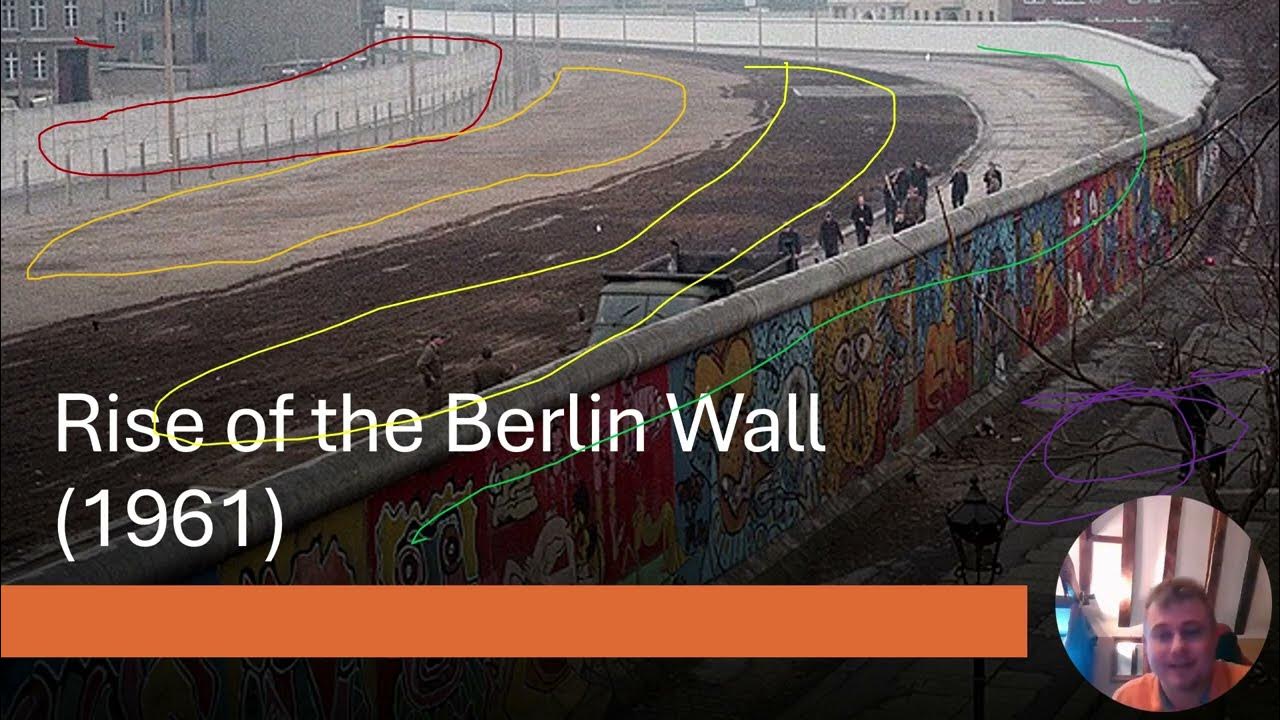Cuban Missile Crisis - The Failed Checkmate - Extra History - Part 1
Summary
TLDRIn April 1962, Soviet Premier Nikita Khrushchev, inspired by US missiles in Turkey, decides to secretly place nuclear missiles in Cuba, sparking the Cuban Missile Crisis. As the US discovers the missiles, President Kennedy faces the challenge of averting nuclear war through tense negotiations and strategic decisions. The crisis highlights the brinkmanship and the precarious balance of power during the Cold War era.
Takeaways
- 🌊 Nikita Khrushchev considered placing nuclear missiles in Cuba after seeing U.S. missiles stationed in Turkey.
- 🚀 Khrushchev's Soviet Union had unreliable long-range missiles but sought to use medium and intermediate-range missiles in Cuba to threaten the U.S.
- 🤔 Fidel Castro was initially skeptical about the placement of nuclear missiles in Cuba, fearing a U.S. first-strike and wanting to appear as an ally, not a puppet.
- 🛳️ Soviet missiles and troops were secretly transported to Cuba on commercial ships, with soldiers disguised as tourists or in civilian clothes.
- 🕵️ U.S. intelligence discovered the Soviet missile installations in Cuba through U-2 spy plane photos, leading to a crisis.
- 🔥 President Kennedy was furious at Khrushchev's perceived betrayal, as he had previously assured Kennedy that the buildup in Cuba would not include missiles.
- 💥 The U.S. considered three main responses: diplomacy, a naval blockade, and an airstrike with an optional invasion.
- 🔄 EXCOMM debated the effectiveness and risks of each response, with the blockade eventually seeming like the best option to leave room for negotiation.
- 🗣️ Kennedy's decision was influenced by the fear of Khrushchev's retaliation in Berlin if the U.S. attacked Cuba.
- 🛡️ The Soviet Union prepared for a possible U.S. invasion, with their missiles in Cuba becoming combat-ready.
- 📺 Kennedy's televised address and the U.S. blockade put pressure on Khrushchev, who had to consider his options for responding to the crisis.
Q & A
What event in 1962 brought the world closer to a nuclear conflict?
-The Cuban Missile Crisis in 1962, where the Soviet Union placed nuclear missiles in Cuba, threatened the United States and brought the world closer to a nuclear conflict.
Why did Nikita Khrushchev consider placing missiles in Cuba?
-Khrushchev considered placing missiles in Cuba to counterbalance the U.S. missiles stationed in Turkey, which threatened Moscow, and to gain a strategic advantage in negotiations over Berlin.
What was the actual capability of the Soviet Union's intercontinental missiles at the time?
-The Soviet Union's intercontinental missiles were super inaccurate and took hours to launch, making them a less credible deterrent against an American first-strike.
How did Khrushchev plan to deploy the missiles in Cuba?
-Khrushchev planned to secretly deploy the missiles in Cuba, unveiling them only once they were operational, to avoid provoking a rash response from the U.S.
What was Fidel Castro's initial reaction to the proposal of deploying nuclear missiles in Cuba?
-Castro was initially skeptical about deploying nuclear missiles in Cuba, fearing that it would be seen as a first-strike threat and that it would make Cuba appear as a Soviet puppet rather than an ally.
How did the U.S. discover the Soviet missile deployment in Cuba?
-The U.S. discovered the Soviet missile deployment in Cuba through U-2 spy plane photographs, which revealed the presence of medium-range missiles.
What was the U.S. President Kennedy's initial reaction to the discovery of the missiles?
-President Kennedy was furious at Khrushchev's perceived betrayal and felt compelled to act on his earlier pledge to take action if the Soviets stationed nuclear weapons in Cuba.
What were the three main options considered by the U.S. in response to the missile crisis?
-The three main options considered by the U.S. were diplomacy, instituting a naval blockade, and an air strike with an optional invasion of Cuba.
What was the significance of the U.S. warships' movement towards a small island in the Caribbean?
-The movement of U.S. warships towards a small island in the Caribbean was a military exercise, but it also symbolized the potential for real military action in response to the crisis.
What was the Soviet Union's stance on the use of their missiles in the event of an invasion of Cuba?
-The Soviet Union initially considered allowing the use of their short-range tactical nuclear weapons in the event of an invasion of Cuba, but Khrushchev later decided to disallow the use of long-range missiles.
How did the situation escalate to the point where a nuclear war seemed imminent?
-The situation escalated as the Soviet Union continued to build missile launch sites and the U.S. prepared for military action, including a naval blockade and potential airstrikes, increasing the risk of a nuclear war.
Outlines

Этот раздел доступен только подписчикам платных тарифов. Пожалуйста, перейдите на платный тариф для доступа.
Перейти на платный тарифMindmap

Этот раздел доступен только подписчикам платных тарифов. Пожалуйста, перейдите на платный тариф для доступа.
Перейти на платный тарифKeywords

Этот раздел доступен только подписчикам платных тарифов. Пожалуйста, перейдите на платный тариф для доступа.
Перейти на платный тарифHighlights

Этот раздел доступен только подписчикам платных тарифов. Пожалуйста, перейдите на платный тариф для доступа.
Перейти на платный тарифTranscripts

Этот раздел доступен только подписчикам платных тарифов. Пожалуйста, перейдите на платный тариф для доступа.
Перейти на платный тариф5.0 / 5 (0 votes)






